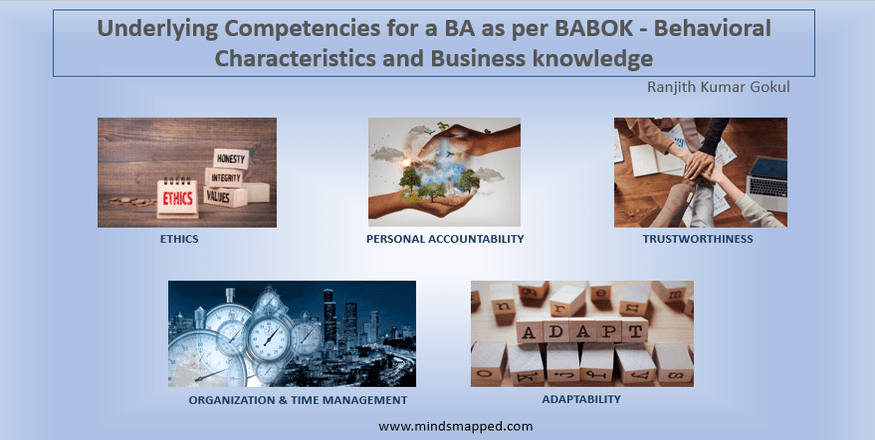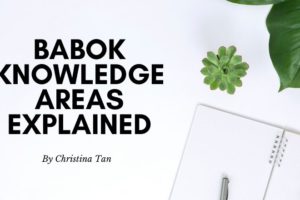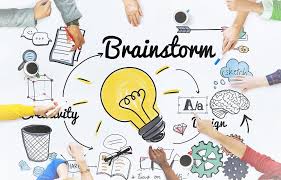
Underlying Competencies for a BA as per BABOK – Behavioral Characteristics and Business Knowledge
Business Analysis – Underlying Competencies
In this article we cover the 2nd and 3rd aspects of the underlying competencies for a Business Analyst as per BABOK namely Behavioral Characteristics and Business Knowledge.
Behavioral Characteristics
These characteristics are not unique to the role of a Business Analyst. Nonetheless, they play a key role in increasing personal effectiveness at work and exist at the core of every Business analyst’s skillset.
The skills and behaviors focused upon in this competency help the Business Analyst in gaining the trust and respect of stakeholders. By meeting the expectations, carrying out tasks on time, delivering quality results and demonstrating adaptability; a Business Analyst can showcase these skills.
The core competencies of Behavioral Characteristics include:
- Ethics
- Personal Accountability
- Trustworthiness
- Organization and Time Management
- Adaptability
Getting into the details of each:
Ethics
A Business Analyst should have the ability to sense when a proposed solution or requirement may present ethical difficulties to either an organization or the stakeholders; thereby try to reduce the exposure to risk. Ethics require focus on fairness, consideration and moral behavior. The impact of the solution on all stakeholders needs to be considered and ensured that those groups are treated as fairly as possible. Solutions should be recommended to deal with ethical dilemmas when they occur.
Effectiveness of ethical behavior can be measured by:
- prompt identification followed by proper resolution of ethical dilemmas
- feedback from stakeholders validating the decisions and actions are fair and transparent
- decisions are made with due consideration of the interests of all stakeholders
- reasoning for decisions that is clearly articulated and understood
- disclosure of potential conflicts of interest
- honest regarding one’s abilities, performance of work, and accepting responsibilities for failures or error
Personal Accountability
Being accountable at work implies completing tasks on time and living up to the expectations of the stakeholders and colleagues. Displaying accountability at work shows the seriousness and commitment that you have towards the work and you drive your teammates to follow the same. This in turn creates credibility for the vendor company in the eyes of the client which can further lead to repeat business.
For a Business Analyst, it encompasses achieving targets and goals to deliver value which is aligned with business needs. It involves:
- Producing complete, accurate and relevant solutions traceable to the business need (RTMs serve the purpose in this case)
- Taking responsibility for identifying and escalating risks and issues (irrespective of issues being from client or vendor end)
- Ensuring the decision makers have appropriate information to take a call and perform impact assessment (not hiding or manipulating information to protect technical team flaws or vendor company’s shortcomings)
To measure the effectiveness of personal accountability, we can follow these:
- Work effort is well planned and easily articulated to others
- Work is completed as per plan or re-planned with enough reasoning and lead time
- Status of work (planned and unplanned) is known
- Stakeholders have confidence that the work is organized
- Issues and risks are identified and acted upon
- Completely traceable requirements are delivered in a timely fashion, and all the business and stakeholder needs are met
Trustworthiness
Trust is more important than ever to our lives and businesses
Trust helps in many ways in smooth functioning of a business. It creates a confidence in the minds of the stakeholders to believe when they share sensitive information or issues with the Business Analyst. They also place faith that their recommendations are well-thought over and then decided to be taken further or discarded. The natural fear of change and the ensuing resistance to change can be alleviated with gaining their trust. There are many ways in which this trust can be earned by a Business Analyst from the stakeholders and colleagues:
- Being consistent in completing tasks well on time, within budget and showcasing results which make stakeholders as well as colleagues to consider the Business Analyst to be dependable and diligent at work.
- Displaying an attitude of confidence which builds the Business Analyst’s demeanor as a strong one. On the other hand, being timid and not so sure about the work done would put off all those who work along with the Business Analyst
- Being honest and straight-forward; handling conflicts, concerns in an immediate manner makes the stakeholders trust more. This is especially needed when some mistakes have to be accepted or some miscommunication needs to be rectified.
- Being consistent at work which leads to predictability about the Business Analyst’s work and make him more reliable
The following factors help in measuring the effectiveness of trustworthiness:
- The Business Analyst is involved in the discussion and decision-making by the stakeholders
- Stakeholders discuss difficult or controversial topics with the Business Analyst
- Business Analyst is not immediately blamed when some issues arise
- Business Analyst’s ideas and referrals are considered well
Organization and Time Management
Ability to prioritize tasks, perform them efficiently and manage time effectively are part of Organization and Time Management. As part of their work, a Business Analyst keeps collecting information from various sources and of varying extent. This information must be stored in an efficient manner to enable re-use later which is possible through Organization of information.
Various techniques that are useful for organization are establishing short-term and long-term goals, action plans, maintaining checklists and prioritizing tasks.
Similarly, prioritization of tasks and deadlines is needed for proper time management.
Techniques for efficient time management are setting time limits for tasks, focusing more on high risk and priority tasks, managing potential interruptions and setting aside focus time.
There are well-established ways to measure the effectiveness of Organization and Time Management which includes:
- Ability to produce deliverables in a timely manner
- Stakeholders realize that the Business Analyst is focusing on right task at right time
- Stakeholders are made aware of the work effort schedule and deadlines
- Time spent by stakeholders in workshops and reading communication is apt
- Meetings, reviews and requirements workshops are taken up with due preparation in place
- Information is captured, organized and documented properly
- Project schedules and meeting deadlines are adhered to
- Accurate, thorough and concise information is provided in a logical manner and well understood by stakeholders
- Up-to-date information on each work item’s status and outstanding work is maintained
Adaptability
Every project that a Business Analyst works on comes with a lot of new things to adapt to – new requirements, new methodology, new business users with their unique mindsets, new type of documentation and processes to be followed. The Business Analyst is perhaps the first and most effected by all these. Thus, he is expected to be adaptable to all these and use the right type of techniques, style, methods and approach. The willingness to interact and complete tasks in a manner preferable to the stakeholders is necessary to maximize the quality of deliverables.
For example, some stakeholders prefer visual representation (flowcharts, UML diagrams…) over textual format (use cases, tabular charts). The Business Analyst must fine tune his documentation to suit the needs accordingly. Effectiveness of adaptability can be measured by:
- Demonstration of the courage to act differently from others
- Properly adapting to changing conditions and environments
- Considering other points of view and approaches
- Demonstration of a positive attitude in the face of ambiguity and change
- Demonstration of willingness to learn new methods, procedures, or
techniques in order to accomplish goals and objectives,
- modifying behaviour to perform effectively under changing or unclear conditions
- Applying new information and skills to address new challenges
- accepting changes made to tasks, roles and project assignments as organizational realities change,
- altering interpersonal style to effectively interact with highly diverse individuals and groups in a range of situations, and
- evaluating what worked, what didn’t, and what could be done differently next time.
Business Knowledge
In order to understand the overarching concepts that govern the structure, benefits and value of the situation and how it related to a change or need; it is essential to have the requisite business knowledge; and the competencies underlying it are:
Business Acumen
Most of the organizations usually share similar practices when it comes to legal & regulatory requirements, finance, logistics, sales, marketing, supply chain management, human resources and technology. Business Acumen is the ability to apply the knowledge based on these similarities in differing situations. Depending on differences in industry, location, size of the company, culture, maturity level; the solution devised would differ. Being aware of how such challenges were solved in other industries or in previous projects of the Business Analysts would help in coming up with better solutions.
Measures of effective business acumen include:
- displaying the ability to recognize opportunities and potential limitations,
- Showcasing the ability to identify when changes to a situation may require a change in an initiative or effort
- understanding the risks involved and the ability to make decisions on managing risks,
- understanding the options available to address emerging changes in the situation, and
- exhibiting the ability to recognize an opportunity to decrease expenses and increase profits
Industry Knowledge
Understanding current practices, activities within an industry and similar practices across industries helps the Business Analyst in better requirement gathering
Industry knowledge involves knowing current trends, market forces, market drivers, key processes, services, products, definitions, customer segments, suppliers, practices, regulations and other factors that impact or get impacted by the industry or related industries.
It is also crucial to know:
- the company’s positioning in the market,
- their competitors,
- area of expertise,
- target customer segment,
- company’s USP,
- products and services offered,
- sister concerns and parent company,
- potential impact of social, political, economical unrest, weather, natural disasters,
- seasonal cycles of productions
- marketing campaigns
When it comes to measuring the effectiveness of industry knowledge, it can be gauged by:
- being aware of activities within both the company and the broader industry,
- knowledge of major competitors and partners,
- ability to identify key trends that shape the industry,
- being familiar with the largest customer segments,
- knowledge of common products and product types,
- knowledgeable of sources of industry information including trade organizations or journals,
- understanding of industry jargon, standards, processes and methodologies, and
- understanding of the industry regulatory environment
Organization Knowledge
Management structure and business architecture of the company, how the company generates profits, accomplishes goals, key stakeholders, different business units of the company – all these form organization knowledge. It would also augur well to understand the official and informal communication channels in the company along with the internal politics that shape decision-making. It is effectively measured by:
- ability to act according to informal and formal communications and authority channels,
- understanding of terminology or jargon used in the organization,
- understanding of services and products offered by the organization
- ability to recognize subject matter experts (SMEs) in the organization, and
- ability to wade through organizational relationships and politics
Solution Knowledge
Knowledge on existing departments, environments, or technology play a vital role in identifying the most effective means of implementing a change in the organization. Also, a Business Analyst may rely on the knowledge gained from previous experiences or find the list of commercially available solutions to expedite the discovery of potential changes. This is done through elicitation or in-depth analysis.
For example, if a Business Analyst has previously worked on a project of the competitor’s mobile app, the best practices learnt while working there could be implemented in the current project (with due care to avoid any case of IT theft) based on similarity of the issues faced by the company. Measures of effective solution knowledge include:
- Reduction in time or cost to implement a required change,
- Reduced time on requirements analysis and/or solution design,
- understanding when a larger change is/is not reasonable based on business benefit, and
- understanding how additional capabilities that are present, but not currently used, can be used to provide value
Methodology Knowledge
The two most common methodologies used are Waterfall and Agile. A hybrid of these, a subset of one of these or a completely different methodology may also be used by the company based on feasibility, cultural fit, organizational maturity, adaptability, risk, uncertainty and governance.
Knowing which methodology is preferred by the company allows a Business Analyst to determine the timing, approach, role of the people involved, accepted risk level, change management etc. Based on it, it would be easy to quickly adapt and perform in new environments.
Measures of effective methodology knowledge include:
- ability to adapt to changes in methodologies,
- willingness to use or learn a new methodology,
- successful integration of business analysis tasks and techniques to support the current methodology,
- familiarity with different type of terms, tools, and techniques prescribed by a methodology, and
- playing multiple roles within activities followed in a methodology.
This marks the end of the underlying competencies prescribed by BABOK for a Business Analyst.



